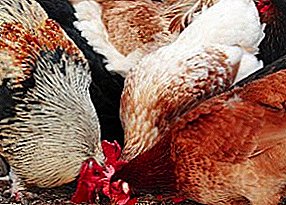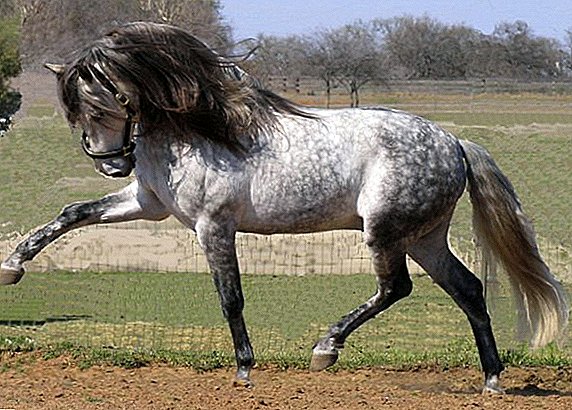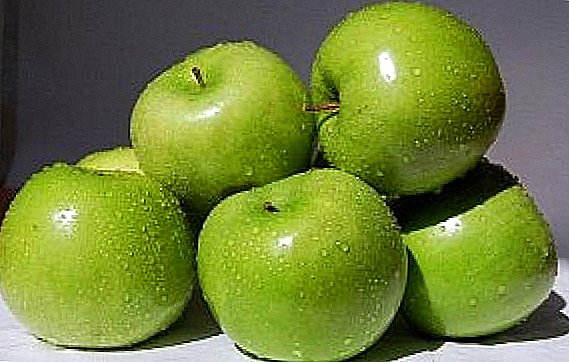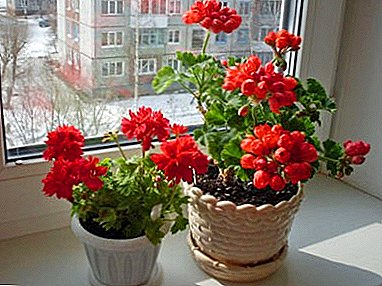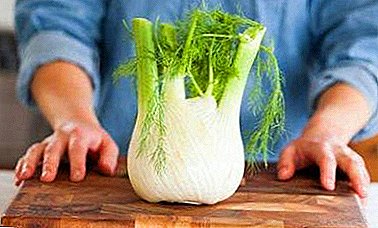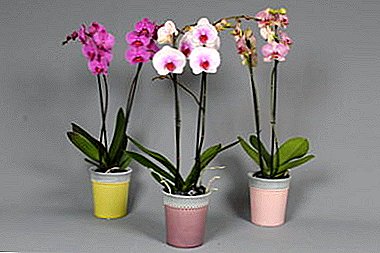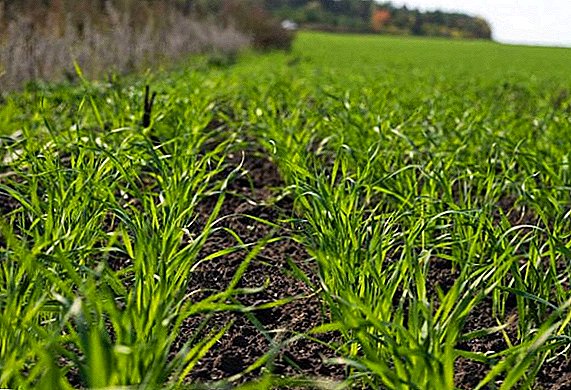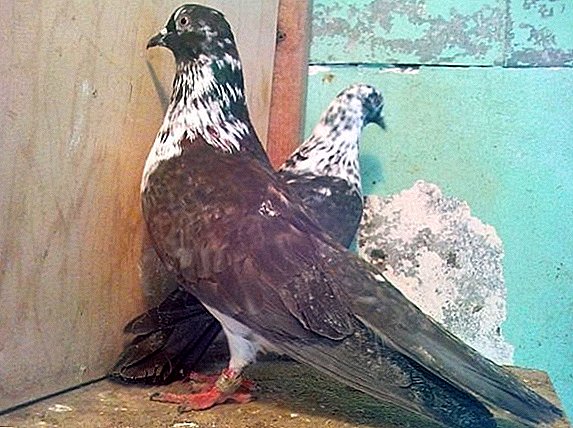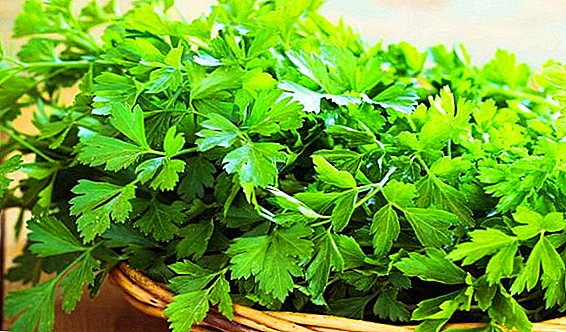 It's hard to find someone who doesn't like parsley. As a rule, spicy greens are associated with this word in consciousness, but any housewife knows that the root of this plant is not less fragrant and valuable than the above-ground part, therefore parsley is sometimes even called a vegetable, more precisely, a root crop. What is this culture, what are the features of its structure, how it differs from other types of greenery - all of this and many other things will be discussed in this review.
It's hard to find someone who doesn't like parsley. As a rule, spicy greens are associated with this word in consciousness, but any housewife knows that the root of this plant is not less fragrant and valuable than the above-ground part, therefore parsley is sometimes even called a vegetable, more precisely, a root crop. What is this culture, what are the features of its structure, how it differs from other types of greenery - all of this and many other things will be discussed in this review.
Varieties and types
Depending on the direction of use of parsley (the Latin name of this plant of the umbrella family is Petroselinum crispum, where the last word is translated as "curly" or "curly-headed") can be divided into two main groups: leaf (Petroselinum crispum var.crispum) and root (Petroselinum crispum var.tuberosum, where the last word translates as "root").
Outwardly, both species are very similar to each other, but the difference is that the leaves of the root variety of the culture are slightly more rigid, and they are more often used in those dishes where the greens are subjected to heat treatment, even for a short time.
Leaf parsley is sometimes grown as an annual crop for the sake of fresh and fragrant greens consumed fresh.
Both varieties of parsley are represented today by a huge variety of varieties that differ in the shape of leaves, taste, smell and other features. Consider the most popular of these varieties.
Leafy
As mentioned above, leaf parsley is not a variety, and it is a subspecies of the plant.  All its varieties are characterized by the following main features:
All its varieties are characterized by the following main features:
- bush height - 40-50 cm;
- the orientation of the leaves is upright;
- leaf shape is pinnate;
- root system - root vegetable;
- lifespan - perennial culture;
- the form of the aerial parts during the first year of life - a rosette of leaves, which can grow several times after pruning;
- the form of the aerial parts in the second year of life - umbrella inflorescences on long, up to 100 cm, arrows, flowers small, numerous, yellow-green.
Ordinary
This variety is sometimes called the Classic. It is characterized by all the main features of Petroselinum crispum var.srispum. The leaves have pronounced jagged edges with deep dissection. The sheet plate is flat, saturated dark green color with a pronounced smell.  Classical parsley has a high growth force and good yield. Already 45-60 days after sowing the seeds, the first fresh leaves can be cut to lettuce, the growth time of young greens with good care is also very short.
Classical parsley has a high growth force and good yield. Already 45-60 days after sowing the seeds, the first fresh leaves can be cut to lettuce, the growth time of young greens with good care is also very short.
Learn how to sow and care for parsley at home.
Gloria
Variety bred by Dutch breeders. Due to not very high winter hardiness in open ground, it can be grown in the 5th and 6th zones, which roughly corresponds to the territory of the steppe part of the Crimea and eastern Ukraine, in cooler regions is more suitable for planting in greenhouses.  Gloria belongs to the early ripening varieties with a high growth force, it takes about two months from germination to technical maturity. It is used mainly as a bunch of greens, has a delicate flavor and rich aroma. Well transported and stored for a long time.
Gloria belongs to the early ripening varieties with a high growth force, it takes about two months from germination to technical maturity. It is used mainly as a bunch of greens, has a delicate flavor and rich aroma. Well transported and stored for a long time.
The pomp and re-growth ability of the variety is very high; there can be 20-25 stems in the socket with a height of 20 to 40 cm with a significant degree of foliage. The color of the sheet plate is dark green, the texture is smooth, the segments are large. The flowers are white or cream, the diameter of the umbrella is up to 15 cm. The root crop is thin and long.
Aster
Universal variety, well suited for cultivation in greenhouses throughout the year. It grows very quickly after cutting. The yield is high, but in terms of maturity, the Astra is significantly inferior to Gloria - to complete the outlet during spring planting it is necessary from 80 to 90 days, with winter - 150-180.  The shape and color of the leaves are similar to the classic Petroselinum crispum var.crispum. Due to rather large plates, the variety, besides fresh consumption, is suitable for winter harvesting - drying or freezing.
The shape and color of the leaves are similar to the classic Petroselinum crispum var.crispum. Due to rather large plates, the variety, besides fresh consumption, is suitable for winter harvesting - drying or freezing.
Breeze
Breeze is another mid-season variety of leaf parsley. The period of full maturation is about 80 days from the moment of emergence of shoots. The plant is quite tall and lush, more than 70 cm in height and weighing up to 80 g, the socket is upright. The dark green leaves are cut into three segments, the teeth on the edges of the plate are slightly curved towards the center.  The leaf plate is smooth, with a beautiful glossy sheen, pubescence on the stem and leaves is absent. The taste of greens is very delicate, with a small content of juice.
The leaf plate is smooth, with a beautiful glossy sheen, pubescence on the stem and leaves is absent. The taste of greens is very delicate, with a small content of juice.
The advantages of the variety include high taste, good yield, lodging resistance, excellent transportability and quality.
Root
If the main value of leaf parsley is in its green part, then in Petroselinum crispum var.tuberosum farmers are also interested in the root crop.  This part of the plant has an even more intense aroma than the aboveground one, and therefore many housewives love to add it to broths, pickles, and various main dishes (vegetable, meat and fish).
This part of the plant has an even more intense aroma than the aboveground one, and therefore many housewives love to add it to broths, pickles, and various main dishes (vegetable, meat and fish).
Important! Petroselinum crispum var.tuberosum is most often used in traditional medicine - as a raw material for the preparation of decoctions, tinctures, tinctures and various elixirs.
Sugar
Early ripe grade with high productivity and very good indicators of frost resistance. Ripens in 3-3,5 months from the moment of emergence of shoots. The bush is very strong, lush and spreading, the leaves are shiny, dark green in color, up to 40 shoots in a rosette.  The root part is a cone with a pointed end, reaching a length of 25-30 cm. The average root mass is 50-55 g, the skin is dirty-white, the pulp is snow-white, slightly yellowing towards the center, very juicy, tender, sweet and fragrant.
The root part is a cone with a pointed end, reaching a length of 25-30 cm. The average root mass is 50-55 g, the skin is dirty-white, the pulp is snow-white, slightly yellowing towards the center, very juicy, tender, sweet and fragrant.
The main advantage of the variety is the resistance to cracking of the root and the universal purpose: in the parsley sugar, you can use the underground, and above-ground part, and both are equally tasty and fragrant.
Alba
The ripening period of Alba is longer than that of most other varieties: it takes from three to four months to fully ripen the root crop. But the size of the root part is impressive: with a length of up to 25 cm, the root crop in its mass reaches 220, and sometimes almost 300 g, although with average care these figures can be two times smaller.  The number of leaves in the rosette is small - no more than 12 stems, but the green has a very high content of vitamin C and even more - carotene.
The number of leaves in the rosette is small - no more than 12 stems, but the green has a very high content of vitamin C and even more - carotene.
The root is very fragrant, has a bright taste, a delicate white color that does not darken after heat treatment, and also - one of the main advantages of the variety - almost does not branch, and therefore is very convenient in processing, is well stored and does not crack.
The final
If Alba is considered a mid-season variety, then the Final should be classified as late. The ripening period of the root is not less than 130 days from the moment of germination. Unlike Alba, in addition to an impressive root, this variety has a very lush above-ground part, consisting of 25-30 erect leaves with a rich bluish-purple color.  The length of one stem reaches 28 cm, the root is 24 cm. The shape of the root is cone-shaped, from 12 to 19 mm in diameter, the mass is quite large, 130-200 g. The taste of the root is very high, the pulp is tender, fragrant, pleasant white light.
The length of one stem reaches 28 cm, the root is 24 cm. The shape of the root is cone-shaped, from 12 to 19 mm in diameter, the mass is quite large, 130-200 g. The taste of the root is very high, the pulp is tender, fragrant, pleasant white light.
Did you know? By the amount of calcium, parsley is twice ahead of indicators of whole cow milk.
The variety also has a high yield.
Eagle
Eagle is a variety of root parsley from breeders from the Netherlands. It is considered mid-season, but ripens even longer than Alba, approximately 135 days from the day of germination. Differs in a good set of growth, a powerful cone-shaped smooth root crop with white pulp, dense, tasty and fragrant.  Root system sizes are average, mass ranges from 100-150 g. Like all Dutch vegetables, Eagle parsley is characterized by excellent commercial qualities, high quality, good transportability, wide zoning zone and versatility in terms of use (suitable for fresh sale , and for blanks).
Root system sizes are average, mass ranges from 100-150 g. Like all Dutch vegetables, Eagle parsley is characterized by excellent commercial qualities, high quality, good transportability, wide zoning zone and versatility in terms of use (suitable for fresh sale , and for blanks).
Another distinctive feature of the variety - resistance to the launch of the arrow.
Description and characteristics
So, parsley is a deciduous plant with a two-year life cycle, the aerial part of which is a rosette of several stems decorated with dissected feathery leaves, the underground part is a thick and fleshy cone-shaped root that goes into the ground to a depth of 20-25 cm.
Important! From the point of view of botanical description, parsley should be qualified as a root vegetable. However, since, in addition to the root, in the plant edible leaf is also an edible part, which is characteristic of greenery, which is sometimes called leafy vegetables, it can be said that parsley is a leafed root vegetable.
The chemical composition of Petroselinum crispum is rich and diverse.
Below are only the most significant biologically active substances present in this plant:
| Vitamins | A (beta Carotene), C, E, K, B1, B2, B4, B5, B6, B9, PP |
| Minerals | potassium, calcium, magnesium, sodium, phosphorus, iron, manganese, copper, molybdenum, selenium, chromium, zinc |
| Replaceable amino acids | alanine, aspartic acid, glycine, glutamic acid, proline, tyrosine, cysteine |
| Essential Amino Acids | tryptophan, arginine, histidine, methionine, valine, isoleucine, threonine, phenylalanine, lysine, leucine |
Did you know? In the seeds of Petroselinum crispum, scientists discovered substances whose effects on the body are similar to narcotic. In this regard, 8 years ago in Russia it was officially forbidden to use in the manufacture of any product both the parsley fruit itself and their essential oil.
In addition, the leaves and root of parsley contain organic acids, phytosterols, flavonoids, glycosides, fiber and other complex carbohydrates, essential oils, fatty acids, including polyunsaturated, as well as many other nutrients, whose effect on the human body is not always unambiguous (first of all it refers to apigenin glycoside present in the plant essential oil, as well as apiol and myristicin). 
The benefits and harm to the human body
The beneficial properties of parsley are known to mankind for a long time.
So, this plant is capable of:
- provide deep cleaning of the body from toxins, products of incomplete redox reactions, salts of heavy metals and other harmful substances and compounds, which in common people are called “slags”;
- provide a general sedative effect on the body, improve sleep, strengthen memory, help relieve tension and stress, get rid of depression (due to the high content of the group of water-soluble B vitamins);
- stabilize the gastrointestinal tract, improve appetite;
- normalize blood sugar levels (due to parsley inulin, a polysaccharide, which is a plant analogue of insulin and regulates glucose metabolism);
- improve visual acuity (due to the high content of carotene);
- provide a tonic effect, improve immunity, help easier to cope with acute infections, including respiratory viral and bacterial, accompanied by increased body temperature (due to the high content of ascorbic acid);
- accelerate metabolic processes, which makes the product very valuable for those who watch their weight or struggle with its surplus;
- heal wounds;
- remove excess fluid from the body, which helps to get rid of edema;
- improve the functioning of the liver, kidneys (removes uric acid salts from the body, as well as sand from the kidneys, has a diuretic effect), normalize the functioning of the cardiovascular system;
- promote cell regeneration, prevent their transformation into atypical (important for the prevention of cancer);
- improve skin condition (as part of complex therapy);
- strengthen the gums and improve the condition of the teeth (due to the high calcium content).
Learn more about what parsley is good for the human body.
Direct and unconditional contraindications to the use of greens and parsley roots have been identified.
With care to include this product in your diet only to people who suffer:
- individual intolerance to any of the elements that make up the plant;
- urolithiasis, other diseases of the kidneys, bladder, stomach, pancreas in the acute stage (irritating epithelial cells of the mucous membranes of the internal organs).
How and where does it grow?
The natural distribution area of Petroselinum crispum is the Mediterranean. According to one version, the ancient Greeks cultivated the plant, on the other - the Spaniards. However, it seems that parsley was known and loved in ancient Egypt.  However, the culture gained widespread thanks to the ancient Romans, who, capturing more and more new lands, along with the new order, introduced into them a favorite plant, a blessing that turned out to be very unpretentious and easily adapting to the proposed climatic conditions.
However, the culture gained widespread thanks to the ancient Romans, who, capturing more and more new lands, along with the new order, introduced into them a favorite plant, a blessing that turned out to be very unpretentious and easily adapting to the proposed climatic conditions.
Did you know? Two legends about the origin of parsley - Egyptian and Greek - are remarkably similar. Both say that the plant grew out of blood, but in the Egyptian version, the blood belonged to Gore, the supreme god who fought with Set, and in the Greek, to the grandson of the Nemean king Lycurgus.
Today, parsley is grown in almost all European countries (with the exception of Scandinavian states). In America, the plant is very popular in the southern states of Canada and in the northern states of the United States.
As for Russia, then, in addition to the European part (right up to Moscow), the Petroselinum crispum got accustomed perfectly in the Siberian and Far Eastern federal districts, but only in the southern parts of their territory.
The ability to grow plants in areas with a rather cold climate is primarily due to the rather short growing season of parsley, which allows it to form even in very short and not too warm summer.
What is different from celery and cilantro?
Parsley is sometimes confused with two other types of greens that have a similar leaf shape, celery and cilantro (also called coriander). All these cultures belong to the Umbrella family, that is, they are indeed close relatives, but their tribal affiliation is different.
It is possible to distinguish them from each other according to a variety of attributes — morphological, chemical (composition), etc., but it is best to focus on your own sense of smell. Each of these three herbs has its own, completely unique smell, remembering that, it can not be confused with any other.  For those who do not trust their "scent", below is more detailed information about three similar plants:
For those who do not trust their "scent", below is more detailed information about three similar plants:
| Parsley (Petroselinum crispum) | Cilantro (Coriandrum sativum) | Celery (Apium graveolens) |
| There are two types - root and leaf | Always leafy | There are three types - root, leaf and stem |
| Root crop has the shape of a cone (similar to carrots) | No root crop | Root has a round, slightly flattened shape (similar to beets or turnips) |
| Leaves smaller than celery, but larger than coriander | Small leaves | Leaves are larger than cilantro and parsley |
| The stem is hard enough, but at the same time it can be used fresh along with the leaves. | The stem is very delicate, in the process of storage quickly becomes soft | The stem is very dense and hard, when used fresh, only the leaves themselves are usually used. |
Features of treatment with parsley
Antiseptic, analgesic, wound healing, anti-inflammatory, antispasmodic, cleansing, diuretic, carminative and diaphoretic qualities of parsley are widely used in traditional medicine.
Did you know? Interestingly, the ancient Greeks, as well as our distant ancestors, for a long time considered parsley as a medicinal plant, and not as a food product, and in most cases Petroselinum crispum was used to prepare various potions for healing wounds.
So, decoctions and infusions prepared mainly from the roots of this plant are used to treat:
- wounds and other skin lesions, including those accompanied by suppuration;
- difficulty urinating, other diseases of the kidneys and bladder, as well as cardiovascular pathologies accompanied by increased edema (as a soft diuretic, that is, a diuretic);
- menstrual disorders and uterine bleeding;
- acute infections (as an anti-inflammatory and diaphoretic);
- prostatitis;
- gout, polyarthritis, and other diseases of cartilage and joints;
- asthenia (loss of strength), depression, insomnia, heightened fatigue syndrome;
- flatulence, constipation, and other digestive problems;
- gastritis and ulcers on the background of reduced production of bile and pancreatic juice;
- age problems associated with loss of visual acuity;
- stomatitis and periodontal disease.
 In addition to root crops, parsley fruits (seeds), fresh or dried leaves, and even freshly squeezed juice from aboveground or underground parts of the plant can also be used as an ingredient for preparing certain dosage forms.
In addition to root crops, parsley fruits (seeds), fresh or dried leaves, and even freshly squeezed juice from aboveground or underground parts of the plant can also be used as an ingredient for preparing certain dosage forms.Did you know? In the old days, chopped parsley roots were rubbed into the scalp to get rid of lice, while it was believed that the same way you can stop the balding process.
As a cosmetology drug, parsley is often used to lighten skin, remove age spots and freckles.
Planting, care, harvesting and storage
The cultivation of parsley is not particularly difficult. The following are the main requirements for this crop:
| Landing time | The winter method (for winter-hardy varieties) - 2 weeks before the onset of resistant frosts; in spring - approximately in the middle of April, when the soil warms up sufficiently, but it does not have time to dry out yet. |
| Good predecessors | All types of pumpkin (cucumbers, zucchini, squash), cabbage, potatoes, tomatoes, onions. |
| Bad predecessors | All types of umbrella (parsley, coriander, carrot, celery, cumin, etc.). |
| The soil | Loose, light and fertile, with a neutral reaction (in general, the plant is not very demanding on the composition of the soil). |
| Lighting | For the formation of beds you need to choose an open and very bright area. |
| Watering | Regular, but moderate. |
| Fertilizers | 1 root and 2-3 foliar supplements per season using organic and complex mineral fertilizers (phosphorus, potassium, nitrogen, the latter element being more important for leaf varieties and to a lesser extent for root varieties). |
| Soil care | Mulching (it is better to use humus or peat), regular removal of weeds. In the absence of mulching - loosening. |
| Harvesting | Greens - as they grow (all three segments should appear on the leaves). Cut the stalk to the ground itself, starting from the outside of the outlet. The more often the cut is, the more intensively the new green grows. Root crops are harvested in the second year, after full ripening (one of the signs of technical maturity of the parsley root is drying up the lower leaves on the rosette). |
| Crop storage | Fresh herbs are not stored for long. You can extend this period by placing the bundle in the water. When harvesting a large crop, it is best to freeze or dry it at room temperature (for example, on a windowsill). Root vegetables are stored in the cellar or in the refrigerator in the section for vegetables, but in the latter case not more than 1-2 months. |
Diseases and pests
Despite the relative simplicity, parsley is often affected by various diseases and pests.
Among the former, the main problem for the plant is created by various kinds of rot, among the latter - insect larvae, which parasitize in the soil and gnaw up root crops.  The traditional method of fighting fungal infections is the use of fungicidal preparations; insecticides and acaricides will help to deal with pests.
The traditional method of fighting fungal infections is the use of fungicidal preparations; insecticides and acaricides will help to deal with pests.
In particular, the most characteristic problems for parsley are solved with the help of such means:
| Disease (pest) | Trade name of the drug |
| Mealy dew | "Tiovit Jet", "Topaz", "Kvadris", "Fundazol" |
| Black Rot (Alternaria) | "Abiga-PIK", "Alirin-B", "Acrobat" |
| Gray rot | "Strobe", "Falcon", "Chorus", "Balayton" |
| White rot | "Oxy", "Ordan", "Previkur" |
| Felt rot (rhizoctoniosis) | "Bator", "Albit", "Vist" |
| Wireworm | "Bazudin", "Provotoks", "Bezar" |
| Carrot fly | "Larkoed", "Arrivo", "Sochva" |
| Scoops | "Confidor", "Aktellik", "Antigusenitsa" |
| Carrot listobloshka | "Aktara", "Volaton", "Decis" |
In order not to resort to the use of toxic chemicals, you should observe the preventive rules of agricultural engineering, which primarily include crop rotation, soil care, weed control, proper watering, etc.  Among the safe and environmentally friendly methods of combating diseases and pests should also be called the use of special biological products, such as Fitosporin, Bicol, Dendrobatsillin, Fitoverm, Nemobact and others.
Among the safe and environmentally friendly methods of combating diseases and pests should also be called the use of special biological products, such as Fitosporin, Bicol, Dendrobatsillin, Fitoverm, Nemobact and others.
Parsley is most correctly attributed to leafy vegetables, because it is one of the few crops in which all parts are edible — both the tops and the roots.
In addition to the spicy aroma and unique taste that can enrich any dish, except, perhaps, most desserts, parsley, due to its vitamin and mineral composition, has numerous beneficial properties, and therefore, is successfully used not only in cooking, but also in traditional medicine.
There are very few contraindications to the use of this garden plant, therefore the more fresh greens on the table, the better!


